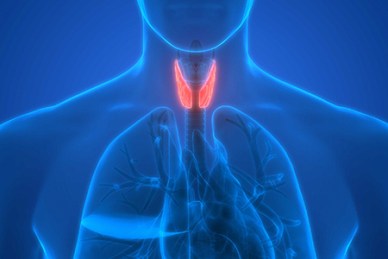Diabetes & Hypothyroidism: The association
Understanding Hypothyroidism helps in early detection, better management and effective treatment. Here's everything you need to know!

Did you know that according to a recent study, approximately 25 to 30 percent of diabetes patients suffer from Hypothyroidism.1 The results are indeed alarming. Hypothyroidism is often found to co-exist with other chronic conditions. Since Hypothyroidism and diabetes are the two most common endocrinal disorders, the correlation between the two is quite natural.
Sadly, the co-existence isn’t quite harmonious. Both conditions are shown to aggravate the complications of each other such as worsening of lipid profile, increasing cardiovascular morbidity and mortality, impaired visual, cognitive and renal functions, severe respiratory morbidities and can also lead to poor pregnancy outcomes.
However, understanding Hypothyroidism helps in early detection, better management and effective treatment. So, what is Hypothyroidism? It is a disease of the thyroid gland, where in the gland is underactive (“hypo” means “under” or “below normal”). In such individuals, the thyroid gland does not produce enough thyroid hormone that is required for the normal functioning of the body.2
The co-existence of Hypothyroidism and Diabetes:
The prevalence of Hypothyroidism in diabetic patients is 2 to 3 times higher than in the general population. Their co-existence make diagnosis difficult.3 And if it is not treated in time, it could impact the treatment outcomes of a diabetes patient3,4
- It increases insulin resistance and sensitivity which could lead to a higher dose of anti-diabetic medications
- Impacts glycemic control and thus overall delays treatment outcomes in diabetes patients
- Increase in the frequent episodes of hypoglycemia (low sugar levels)
- Severe disruption of lipid profile and increases the cardiovascular morbidity
- Severe effect on the sexual functions
- Negative impact on the pregnancy outcomes
- Aggravates hair loss and affects hair growth
- Causes fatigue and exercise tolerance
- Creates an atherogenic profile which predisposes to hypertension and heart diseases
- Affects multiple organ systems: Early occurrence of retinopathy and nephropathy, increased obesity, worsened osteoporosis, altered mental functions and depression, low immunity, predisposition to metabolic syndrome and sleep disturbances.
Early and timely diagnosis helps!3,4
- Improves insulin function and overall diabetes control
- Enables early diagnosis and management of immediate and long-term complications
The indicators of Hypothyroidism
The symptoms of Hypothyroidism are often confused with other health conditions. However, these symptoms develop gradually over a period of several years. Common signs and symptoms of Hypothyroidism include tiredness, weight gain, feeling sad or depressed, heavier and/or more frequent menstrual periods, worsening cramps, infertility (difficulty in getting pregnant), sexual dysfunction, more hair fall, need for more sleep.2
Hence, medical associations and guidelines in India and across the globe recommend testing of thyroid functions (levels of thyroid hormones) in:5,6,7
- Thyroid Stimulating Hormone (TSH) estimation is recommended from 35 years of age once every 5 years in adults, and more frequent testing in high-risk individuals.
- All diabetics should be screened for thyroid disorders at the time of diagnosis
- Frequent screening of Hypothyroidism in Diabetics
- Screening for thyroid dysfunction in pregnant women is recommended.
The good news is that this condition can be managed with timely diagnosis and treatment. So, if you are a diabetic, be thyroid smart. Consult your doctor today!
References:
- Talwalkar P, Deshmukh V, Bhole M. Prevalence of hypothyroidism in patients with type 2 diabetes mellitus and hypertension in India: a cross-sectional observational study. Diabetes Metab Syndr Obes. 2019;12:369-376.
- Braverman LE, Cooper DS. Introduction to hypothyroidism. In: Werner & Ingbar’s The Thyroid. Ed. 10th. 2013; 523-524
- Kalra, S., Aggarwal, S. & Khandelwal, D. Thyroid Dysfunction and Type 2 Diabetes Mellitus: Screening Strategies and Implications for Management. Diabetes Ther. 2019;10:2035–2044
- Biondi B, Kahaly GJ, Robertson RP. Thyroid Dysfunction and Diabetes Mellitus: Two Closely Associated Disorders. Endocr Rev. 2019;40(3):789-824. doi:10.1210/er.2018-00163
- Garber JR, Cobin RH, Gharib H, et al. Clinical practice guidelines for hypothyroidism in adults: cosponsored by the AACE and the ATA. Endocr Pract. 2012;18(6):988-1028.
- Jayakumar RV. Hypothyroidism and diabetes: Indian consensus statement. Indian Thyroid Society. Elsevier India. 2016
- ITS-FOGSI Recommendations for the management of thyroid dysfunction in pregnancy. 2019